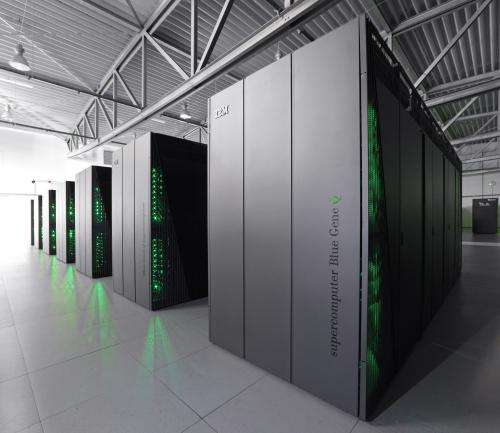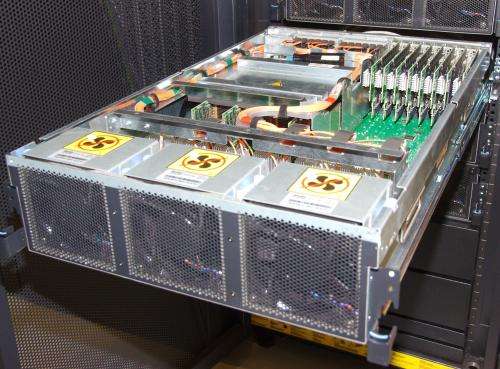Blue Gene active storage boosts I/O performance at JSC

The ever growing complexity of various simulation tasks not only require a continuous increase of computing power but also the capability of managing large amounts of data. Realisation of an active storage architecture and integration of non-volatile memory into Blue Gene/Q enables data intensive applications to exploit the performance of this highly scalable high-performance computing system by IBM. The BGAS system is the result of a close collaboration between Forschungszentrum Jülich and IBM in the framework of the Exascale Innovation Centre. It is attached to the supercomputer JUQUEEN installed at Jülich Supercomputing Centre (JSC). This Blue Gene/Q system is currently the most powerful system in Europe.
Active storage is an architectural concept that addresses the increasing costs of data transport between compute and storage systems. Therefore, computing power and storage are much more tightly integrated. In addition, in BGAS this is combined with the power of non-volatile memory technologies which feature not only high bandwidth but in particular very high access rates. The BGAS system at JSC consists of 32 nodes each connected to a newly designed PCIe card comprising 2 TBytes of SLC NAND flash memory. The BGAS nodes are interconnected within a 3-dimensional torus network. Furthermore, each node is connected to a Blue Gene/Q compute system and to an external storage facility. This architecture is particularly suitable for data intensive tasks and thus enables new research.
"Highly complex simulations such as in brain research generate large volumes of data that can no longer be processed by conventional methods. New I/O concepts are therefore one of the most important steps to achieve new research results using high-performance computers in these areas," says the director of JSC, Prof. Thomas Lippert.
New opportunities for neuroscience simulations
The opportunities of the newly installed BGAS had been immediately recognised by the computational neuroscientists at Forschungszentrum Jülich. "During extensive simulations of neuronal networks large amounts of data must be stored externally in order to be analyzed later," says Prof. Markus Diesmann. The director at the Institute of Neuroscience and Medicine is one of the developers of the freely available software NEST, which is used by neuroscientists worldwide. However, no typical HPC system does provide sufficient I/O capabilities to cope with the generated data that researchers would like to analyse. "BGAS can sustain the required data rates and provides the compute power to analyse this data," says Markus Diesmann. The new storage system additionally facilitates interactive access to the data.

A team led by the Jülich neuroscientist recently succeeded in simulating the largest neuronal network to date consisting of 1.73 billion nerve cells on the Japanese K computer. The result demonstrates that the neuroscientists can make full use of existing petascale supercomputers.
Provided by Forschungszentrum Juelich





















